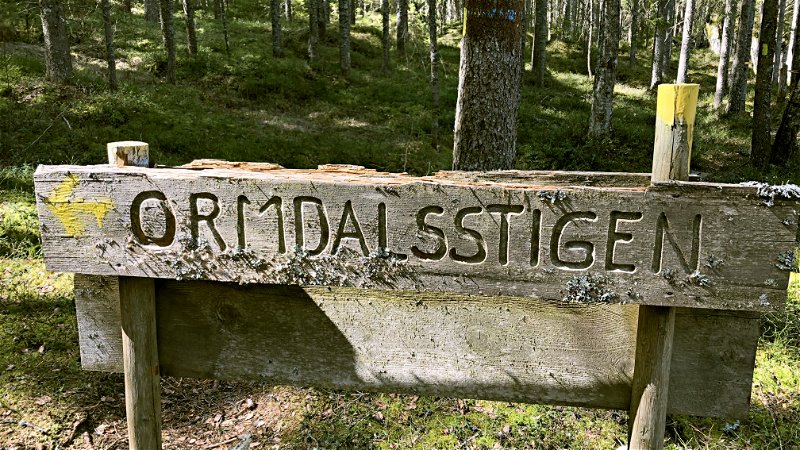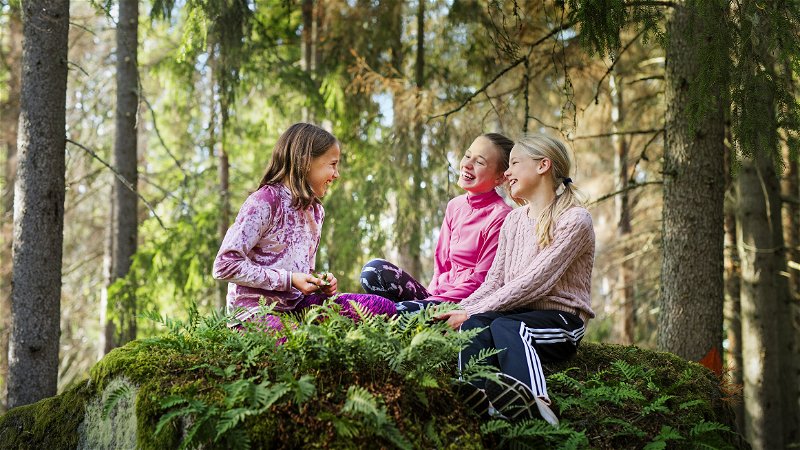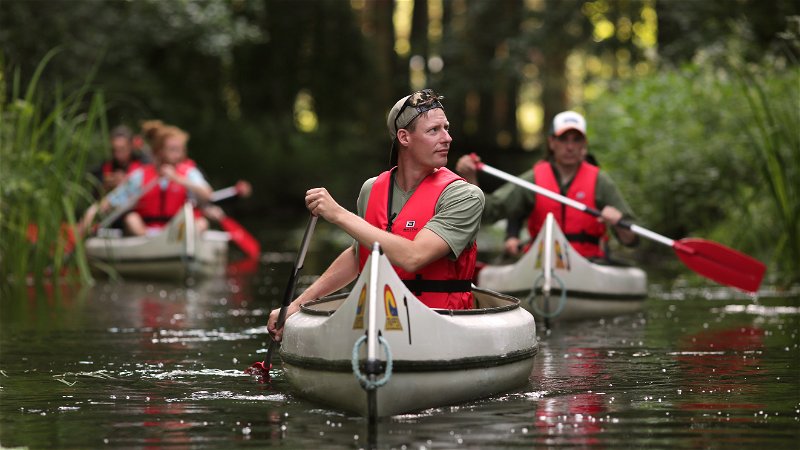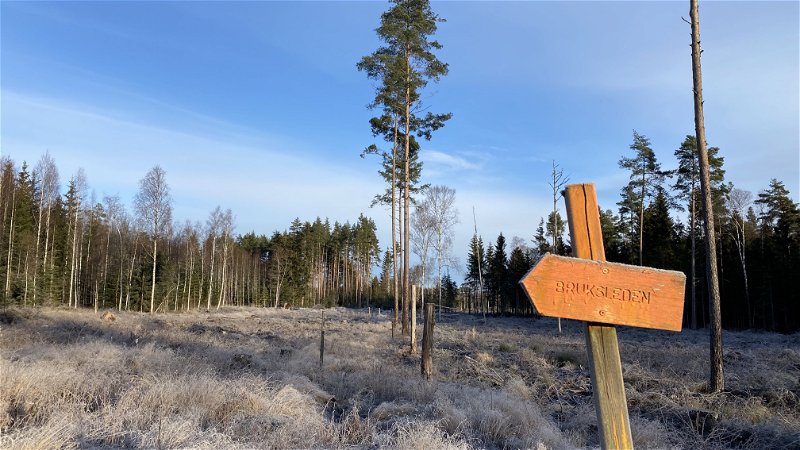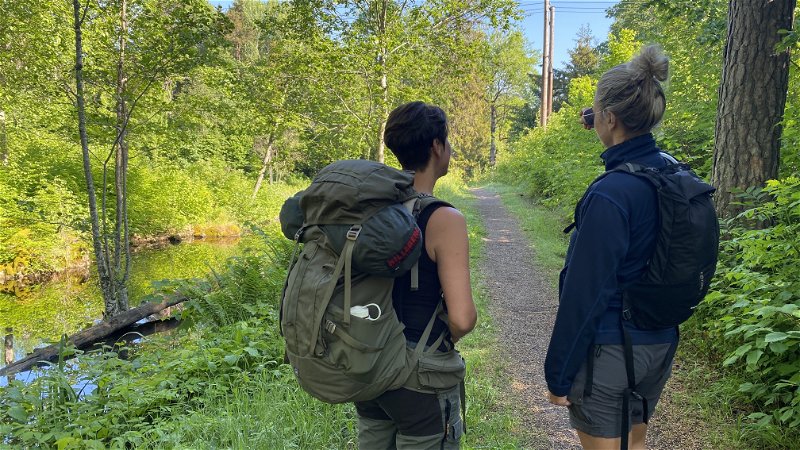3 generations on a hike – join them on the Ormdalslingan trail!
How does a river become a river? Can you eat hot dogs without ketchup? And what’s the most common animal on the Ormdalslingan trail? Come along with the Lund family on a scenic hike, and you’ll (maybe) find the answers!
Adventure and the outdoors — preferably in combination — are what’s usually on the agenda when the Lunds, all three generations of them, get together. And for this article, we tag along as they traverse a popular route from the Trails of Västmanland: the Ormdalsslingan trail. The almost six-kilometre-long trek offers varied and beautiful scenes through fairytale-like forests in the picturesque Baggådalen and the Ormdalen nature reserve, just outside the town of Skinnskatteberg.
The trail starts at the historic Nedre Borgfors iron mill and is close to the Hedströmmen river. The lovely sound of running water immediately raises the mood and sparks many questions from the kids. The family manages to learn from some nearby information placards why the freshwater pearl mussel is a protected species, then, after a moment's discussion, everyone agrees that a question about whether a river is always a river is more philosophical and therefore lacks a definite answer.
Interesting natural and cultural historyWith the girls in the lead, the group heads off down the path. The route has clearly visible signage to follow, with yellow trail markers leading the way. So there’s no risk of getting lost! After a while, they find themselves inside an untouched forest among flat bogs, winding streams, and moss-covered mountain sides. The partially hilly path gets a bit narrow and feels crowded at some points, but it leads the group safely across any steeper and wetter sections via stairs, bridges, and walkways.
The Lund family is an experienced group of hikers who like to spice up their nature excursions with something extra. They packed a lunch, which is necessary to boost energy and spirits. And the girls, who learned about the environment and sustainability in school, equip themselves with bags for picking up litter and collecting trash. Grandma Carina thinks the information placards about the local natural and cultural history give the Ormdalsslingan trail an interesting feature, while granddaughter Alicia suspects that grandma is reading all the signs as an excuse to stop and rest.
"Hiking shouldn't be too hard, so it's nice to have small breaks,” says Carina. “But most of all, I think it is interesting to read about everything from the glaciers and iron industry to how many families lived in the old workers' housing estate we passed by at Skommarbo.”
The long-awaited break at Ormputten pond
After an hour's hike, the group arrives at a minor attraction of the forest: Ormputten pond. So it’s time for a long-awaited break! At Ormputten pond, there’s both a wind shelter and a firepit with a grill, which soon has a cracking fire. It’s high time to grill hot dogs and enjoy lunch alongside birds chirping and the sweet stillness that only exists in the middle of a large forest.
The calm atmosphere is soon brought to an abrupt end when it's realised that the ketchup was left at home. But after the girls try hotdogs with just mustard, lunch is saved, and the hike can continue.
The group pass one anthill after another, each larger than the last, and it is agreed that despite its name meaning “the snake valley’s trail” in Swedish, the Ormdalsslingan trail is home to an awful lot more ants than snakes. Upon reaching the Hedströmmen river again, they discover signs of another thriving member of the local wildlife. It’s so cool to see a big tree that beavers have been gnawing on! They walk the last beautiful part of the Ormdalsslingan trail to the flowing sounds of the river. Back in the parking lot, everyone is a bit tired but very happy with the day's excursion.
"We had great fun,” says Alicia. “Although, we would have rather had ketchup than just mustard. It was awesome with all the slopes and stairs and bridges and places where it was a little tight and difficult. Picking up litter didn't go that well, there was almost no rubbish at all, just our own after lunch and coffee. But that’s good for the environment."
